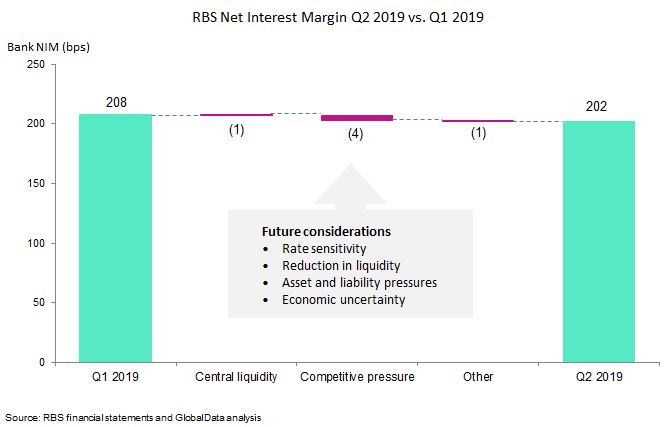Advantages and Disadvantages of Fiscal policy

Can Target Specific Sectors
Fiscal policy can target specific sectors, industries or groups. Unlike monetary policy which is a blunt instrument and targets the economy as a whole. For example, in the post-mining boom, fiscal spending can be directed to mining states such as WA or QLD rather than growth states such as NSW or VIC.
In addition to that, any recession would end once the balance of payments was improved enough to increase the money supply once again. However, the great depression of the 1930s revealed huge flaws in the existing fiscal policies.[1] The severity of these events gave rise to a set of new ideas. Economist John Maynard Keynes, a British economist in the 1800s and the 1900s, stated that governments should be able to advantages and disadvantages of fiscal policy influence their economy to offset the contraction and expansion of the economy. The impact of an expansionary fiscal policy depends on what else is happening in the economy. It also depends on the timing of the fiscal stimulus and the size of the injection of demand into the circular flow – measured as a share of GDP. Fiscal spending could be influenced and directed to uncertain seats rather than areas of need.
Fiscal Policy vs. Monetary Policy: Pros and Cons
The British government relied on the classical theory of economy, hoping that the economy would return to its normal state of equilibrium after the depression on its own. He argued that once an economy has reached that downturn level, a rise in fear and gloom from businesses will cause an extended period of depressed economy and unemployment. This is sometimes referred to as the Fed’s “dual mandate.” Most countries separate the monetary authority from any outside political influence that could undermine its mandate or cloud its objectivity.
Indirect taxes are taxes levied on consumption, such as sales tax, value-added tax. During a recession, out-of-work individuals can receive income assistance through unemployment insurance. On a larger economic scale, this program can help prevent disposable incomes from dropping to low levels that risk further slowing the economy. A progressive tax system can also help smooth the economic cycle in times of expansion. A disproportionate share of taxes can boost the nation’s treasury while tempering spending activity from higher levels that might have resulted in the absence of a progressive tax system.
Multiplier, Accelerator and Keynesian Economics (Revision Presentation)
When you add more money to the economy to counter this situation, then inflation can run out of control because of the supply and demand principles that are present. Monetary policies can create predictable results with the tools which are available to the central banks. The caveat of this advantage is that those who implement the tools must use them as intended for them to work. There isn’t a need to wait for the effects of each choice to become measurable because there is certainty in what each tool can provide. There are two primary actions that governments rely upon when influences an economy at the macro level. The first is called fiscal policy, while the other option is monetary policy.

It happens when government deficit spending is lower than ordinary. On another side, fiscal policy also aims to slow down an overheated economy by lowering its spending or increasing taxes, thereby weakening aggregate demand and avoiding hyperinflation. When the economy is overly active and inflation threatens, it may increase taxes or reduce spending. However, neither is palatable to politicians seeking to stay in office. Thus, at such times, the government looks to the Fed to take monetary policy action to reduce inflation.
Fine tuning – fiscal policy
The decisions made today impact the 5-year and 10-year plans of companies, creating a chain reaction throughout the economy. Central banks have the capacity to act quickly when they sense there is an issue with the monetary policy. Their toolbox is filled with options that can be implemented on a moment’s notice sometimes.
- Indeed, there have been various degrees of interference by the government over the history of the United States.
- That means you could potentially see steep declines in all sectors.
- Selling government bonds from its balance sheet to the public in the open market also reduces the money in circulation.
- Although one will always see pain on their bottom line based on the overall strength of a currency, we typically want to see more exports than imports because that would lead to a positive trade balance.
One example is the progressive tax system, which disproportionately raises the tax rate on those generating higher incomes. As personal wages shrink during a recession, taxes collected through this system help cushion losses in consumers’ purchasing power, keeping more spending money in the hands of consumers. In a nutshell, Keynes believed that the government’s budget should be in deficit when the economy is slowing and in surplus when economic growth is booming (usually accompanied by inflation). Under this policy, government expenditure is limited depending on the taxes collected. Since it’s not easy to know how much tax collection will yield annually, governments forecast future taxes to make economic plans.
Should the Government Be Getting Involved With the Economy?
There is also the lag effect, which refers to the time it takes to implement a fiscal policy measure. Monetary policy involves changing the interest rate and influencing the money supply. Fiscal policy involves the government changing tax rates and levels of government spending to influence aggregate demand in the economy. The ultimate objective of the fiscal is to use government spending and taxation to influence and maintain a stable economy.[2] Policymakers use monetary policy and fiscal policy as their main tools. They change the rates of taxes depending on the economic weather and their spending to either reduce or increase the supply of money in the nation.

If the economy is growing too rapidly, the central bank can implement a tight monetary policy by raising interest rates and removing money from circulation. Congressional Research Service explains, when the government spends an extra dollar, someone receives it. He may save part of it and spend part of it, depending on his disposable income. This creates a multiplier effect in the economy because the next person receiving the spending would also spend part or all of it, and so on. Lower taxes mean more disposable income, which leads to additional spending and economic growth. Where expansionary fiscal policy involves spending deficits, contractionary fiscal policy is characterized by budget surpluses.
A decision to build a new bridge, for example, will give work and more income to hundreds of construction workers. A decision to spend money on building a new space shuttle, on the other hand, benefits only a small, specialized pool of experts and firms, which would not do much to increase aggregate employment levels. The government does this by increasing taxes, reducing public spending, and cutting public sector pay or jobs. Alternately, rather than lowering taxes, the government may seek economic expansion by increasing spending (without corresponding tax increases). Building more highways, for example, could increase employment, pushing up demand and growth. Pessimism, fear, and uncertainty among consumers and businesses can lead to economic recessions and depressions.
Dutch fiscal unity regime: Advantages and disadvantages after … – International Tax Review
Dutch fiscal unity regime: Advantages and disadvantages after ….
Posted: Tue, 22 Mar 2022 07:00:00 GMT [source]
Monetary policy is most widely used for ‘fine-tuning’ the economy. Making minor changes to interest rates is the easiest way to influence the economic cycle. Deflationary fiscal policy is highly politically unpopular.However, in some circumstances, monetary policy has its limitations. In serious recessions, a combination of two policies may be needed. The drawback of expansionary fiscal policy is that it increases the budget deficit. Some argue this can lead to higher interest rates as markets require higher interest rates to fund borrowing.
For example, financial situations might change whereas new policy is being made and carried out. Fortunately, the federal government has automated stabilizers, such as the progressive income tax and unemployment insurance, which adjust mechanically to adjustments within the economic system. Since money is easier to get, folks will spend more and businesses will make investments extra. More demand means extra manufacturing, which would require extra staff. Congress authorizes taxes, passes laws, and appropriations spending for any fiscal policy measures through its power of the purse.
Fiscal Policy vs. Monetary Policy
An assessment of whether the fiscal policy tools will be effective can be carried out using the multiplier effect. Direct taxes and transfer payments can be changed only when a considerable notice is given because individuals and companies need to adjust for the changes. Similarly, government spending has a large time lag, i.e. it takes a lot of time in approving and formulating capital spending plans. Indirect taxes can be adjusted as soon as they are announced, and they affect consumer behavior and increase government revenue almost immediately.
- Spending on military projects or on infrastructure can produce positive benefits besides economic growth.
- Adam received his master’s in economics from The New School for Social Research and his Ph.D. from the University of Wisconsin-Madison in sociology.
- The independent nature of the central banks allows for the monetary policy to be kept separate from legislative policy.
- Fiscal policy is the means by which a government adjusts its spending levels and tax rates to monitor and influence a nation’s economy.
- Fiscal coverage is the means by which a government adjusts its spending levels and tax charges to monitor and affect a nation’s economic system.
Based in Ottawa, Canada, Chirantan Basu has been writing since 1995. His work has appeared in various publications and he has performed financial editing at a Wall Street firm. ATAR Survival Guide operates under Elucidate Education Ltd, a registered not-for-profit organisation, approved by the Australian Charities and Non-for-Profits Commission. National insurance is a compulsory contribution from both employer and employee to provide workers with a minimum welfare payment during periods of unemployment. The high taxes discourage smoking, yet doesn’t eliminate the right someone has to smoke if they wish to do so. Amanda Bellucco-Chatham is an editor, writer, and fact-checker with years of experience researching personal finance topics.

